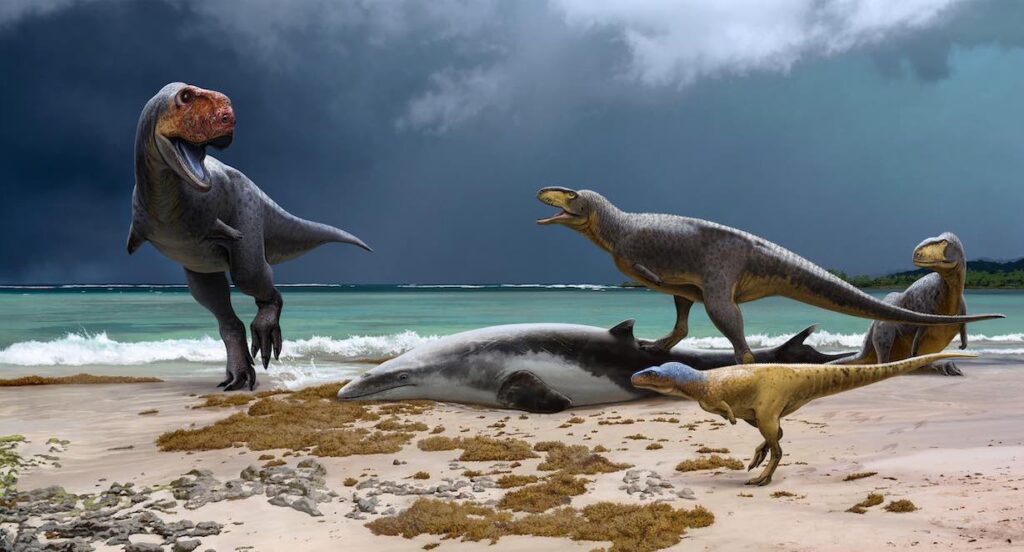In the sands of Morocco, scientists unearthed two newfound dinosaur species, akin to the infamous T-Rex but with peculiar bulldog-like snouts and notably shorter arms. These discoveries belong to the Abelisauridae family, carnivorous counterparts to the tyrannosaurs of the Northern Hemisphere.
Amidst the shadows of the colossal abelisaur Chenanisaurus barbaricus, these fossils divulge a diverse prehistoric tapestry in Morocco. They paint a picture of a land teeming with diverse dinosaur species just before a cataclysmic asteroid collision terminated the age of dinosaurs 65 million years ago.
The initial discovery hails from the outskirts of Casablanca near Sidi Daoui, represented by a modest foot bone from a predator measuring roughly two and a half meters. The other find, from nearby Sidi Chennane, unveils the shin bone of a carnivorous giant, doubling the length of its predecessor.
Dr. Nick Longrich, leading the study from the Milner Centre for Evolution at the University of Bath, expressed surprise at these discoveries in marine beds. “It’s a shallow, tropical sea filled with plesiosaurs, mosasaurs, and sharks—hardly a place one would expect to uncover dinosaurs. Yet, here they are.”
Morocco, a fossil-rich ground, provides a vivid glimpse into late Cretaceous animal life. These shallow sea beds harbor an immensely varied assembly of ancient taxa.
Presently, the recovered dinosaur fossils encompass five distinct species, including a diminutive duckbill dinosaur named Ajnabia, a long-necked titanosaur, the colossal abelisaur Chenanisaurus, and the two recent additions within the abelisaur lineage.
“While we have more fossils awaiting study, their secrets remain veiled for now,” shared Dr. Longrich.
Contrary to notions of dinosaur decline preceding the catastrophic asteroid impact, the Moroccan discoveries suggest a thriving dinosaur population in North Africa until the very end.
Dr. Longrich remarked, “The late Cretaceous in western North America might portray reduced diversity towards the end, but that’s just a fragment of the world. We can’t extrapolate the Wyoming and Montana dinosaurs to the entire globe.”
“As temperatures dropped, diversity might have dwindled in higher latitudes. However, our knowledge of dinosaurs from lower latitudes remains limited.
